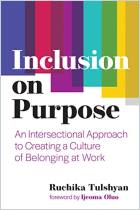Melden Sie sich bei getAbstract an, um die Zusammenfassung zu erhalten.

Melden Sie sich bei getAbstract an, um die Zusammenfassung zu erhalten.
Janice Gassam Asare
Decentering Whiteness in the Workplace
A Guide for Equity and Inclusion
Berrett-Koehler, 2023
Was ist drin?
Start creating a more equitable workplace culture today and holding leaders accountable.
Recommendation
Many workplaces prioritize the needs and norms of white staff members, which can result in an uncomfortable and unsafe environment for BIPOC employees. According to organizational psychologist Janice Gassam Asare, today’s leaders have a responsibility to create more equitable workplaces by “decentering whiteness.” When you decenter white voices, Gassam Asare explains, you create space for workers from marginalized backgrounds to share their experiences and perspectives. Discover how unconscious bias may be affecting your workplace culture and how to take action to trigger systemic change.
Summary
About the Author
Janice Gassam Asare, PhD, is the founder of BWG Business Solutions, an award-winning DEI consulting firm.



















Comment on this summary